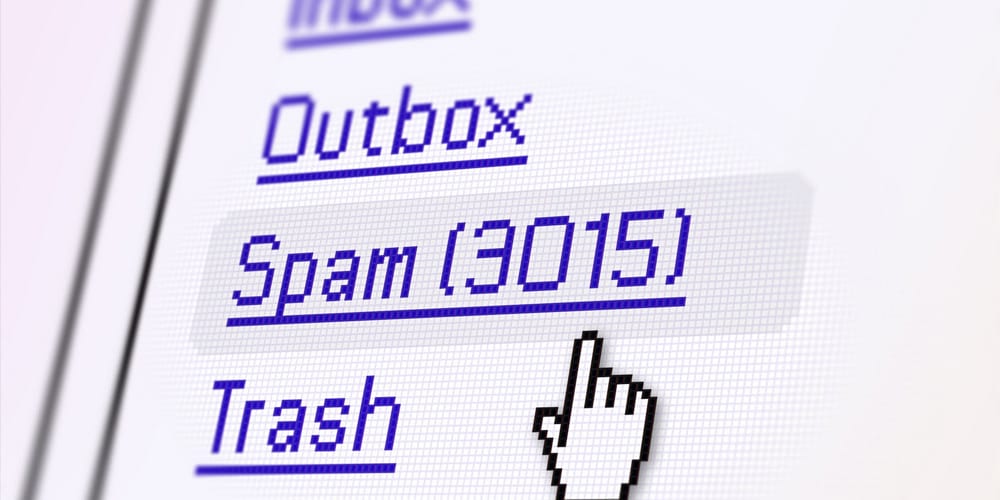Introduction
According to the Harvard Business Review (hbr.org), the average professional spends 28% of their work day reading and responding to email. Those numbers are backed by the McKinsey Institute, a leading think-tank. Approximately 47 minutes a day is consumed by filtering spam emails and other unwanted garbage from your inbox. You can easily improve your productivity if you stop spam emails.
Below are some helpful tips to effortlessly reduce the time you spend on email, especially ridding yourself of spam and other unwanted emails.
- Mark spam as spam
- Use tags and stars to separate important emails from spam and newsletters
- Become more efficient with using email
- Automate your Inbox
Mark Spam Emails as Spam
In order to stop spam emails, you should be actively marking them as spam

This goes without saying, but is often overlooked. When you receive a spam email from an unknown sender, just press the “stop sign” icon in your Gmail toolbar (assuming you are using Gmail). In order to stop spam emails, you have to train your email provider on what you believe to spam. Marking emails as “spam” is the most certain way to stop future spam from happening.
When you do this, Google’s algorithm starts working on blocking similar messages and content from that server. Google checks against other people like you who have also marked that message as spam. This will guarantee you don’t get more messages like that again.
Star your Important Emails
In order to prioritize your tasks, create a to-do list by starring important emails

Start by switching to the “Priority Inbox”. This is a Gmail feature, but most modern inbox providers have the same thing.
By switching to priority inbox, you ensure that your starred messages are on top and never go away until you un-star them. You also ensure that any message that involves your email address directly in the “To:” or “Cc:” line, are on the top. You also mark things as “important” or “not important” by clicking the arrow icon next to the subject line. This will make sure those messages are on top, too.
When your inbox is set up this way, you’ll be more productive because the noisy newsletters and other random stuff floats its way to the bottom, giving you a clutter free way to do your work.
Advanced Tips for Efficiency
In order to become more efficient at using email for work, you should be following some best practices that many high performers use. Eliminating spam emails is only the beginning!
You should turn off email notifications on your desktop screen. It’s a huge distraction and nothing…I mean NOTHING is ever so important that you must stop everything you’re doing and respond to an email immediately. Instead, just setup a reminder to check your email once every hour. The real pro’s only check email 3 times a day. Once in the morning, then around lunch, then again at the end of the day.
Use the search bar to re-find old emails. This will save you tons of time and if you search by sender, you’ll see a holistic view of all the emails that person has sent you. It will give you the whole story in one view!
Another great trick (and obvious to many), is to have two different email accounts. One with Gmail and one with another provider such as AOL or Yahoo. The Gmail account is the one where you do your work. You give this account to friends and family or co-workers/colleagues. Use the Yahoo or AOL account to sign up for newsletters, new accounts, promotions etc. All the email spam goes there and not to your main account.
Finally, you should setup at least two folders to archive old emails in. You can use shortcuts to process them into each folder. I personally have one folder where active client projects filter into, and another folder for completed client projects go. This way all my communication is separated out into easy to find folders.
Conclusion
Filtering and going through email spam is a huge waste of time. However, once you get into a habit of marking emails as spam, creating a priority inbox, moving read emails into a new folder, you’ll see a huge boost in productivity. By using the tips provided in this simple outline, you’ll be a master of email in no time at all.
Automate Your Email Inbox
Once you master these skills, you can begin to think about automating your email inbox tasks. For example, what if anytime there was an attachment, you could automatically save it into Google Drive, or send it to a Slack channel? What if every time a certain sender, like your boss, emailed you got a Slack notification? The possibilities are limitless and Workload is here to help you setup inbox automation on any email provider.
Focus on your business, not on processes! If you are interested in learning more about automating your business, drop us your email below. For most processes, we can automate in the same day for a nominal charge.
[contact-form-7 id=”1266″ title=”Simple Subscribe Form”]

